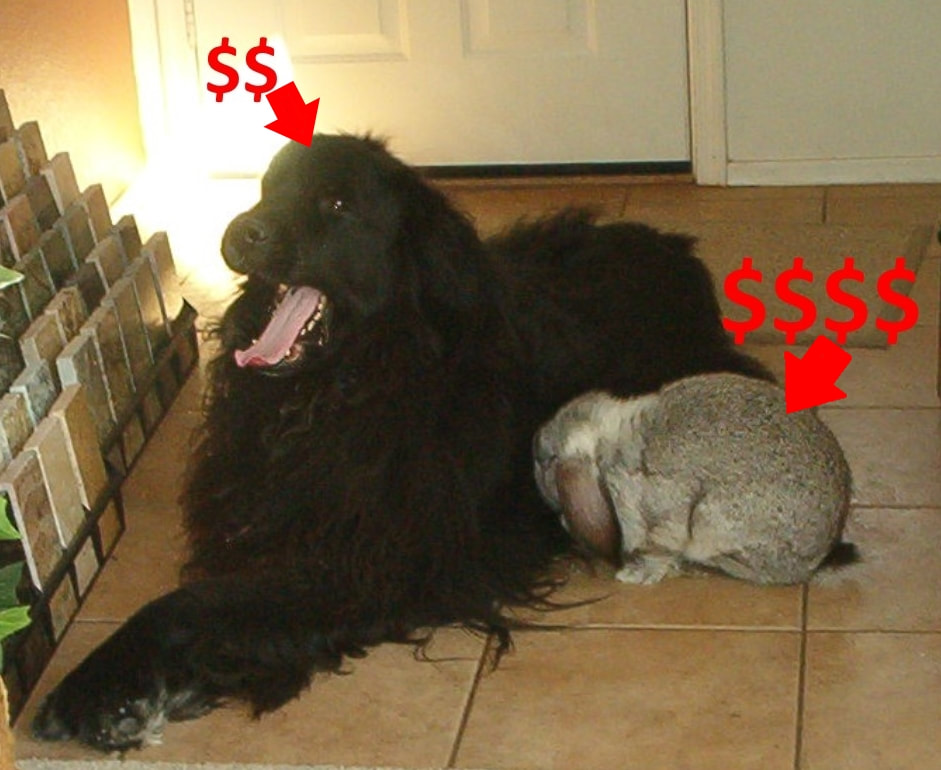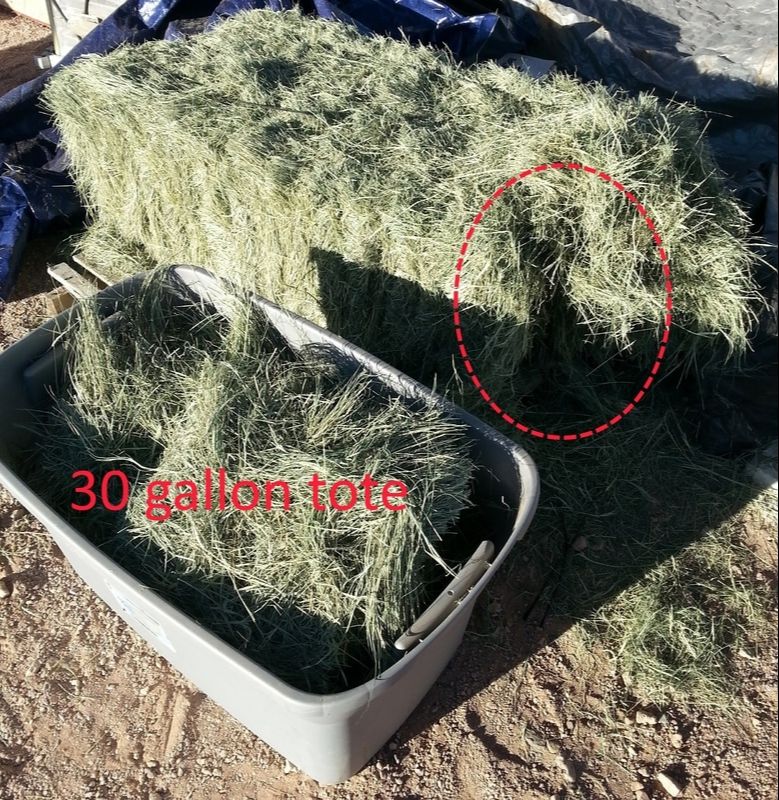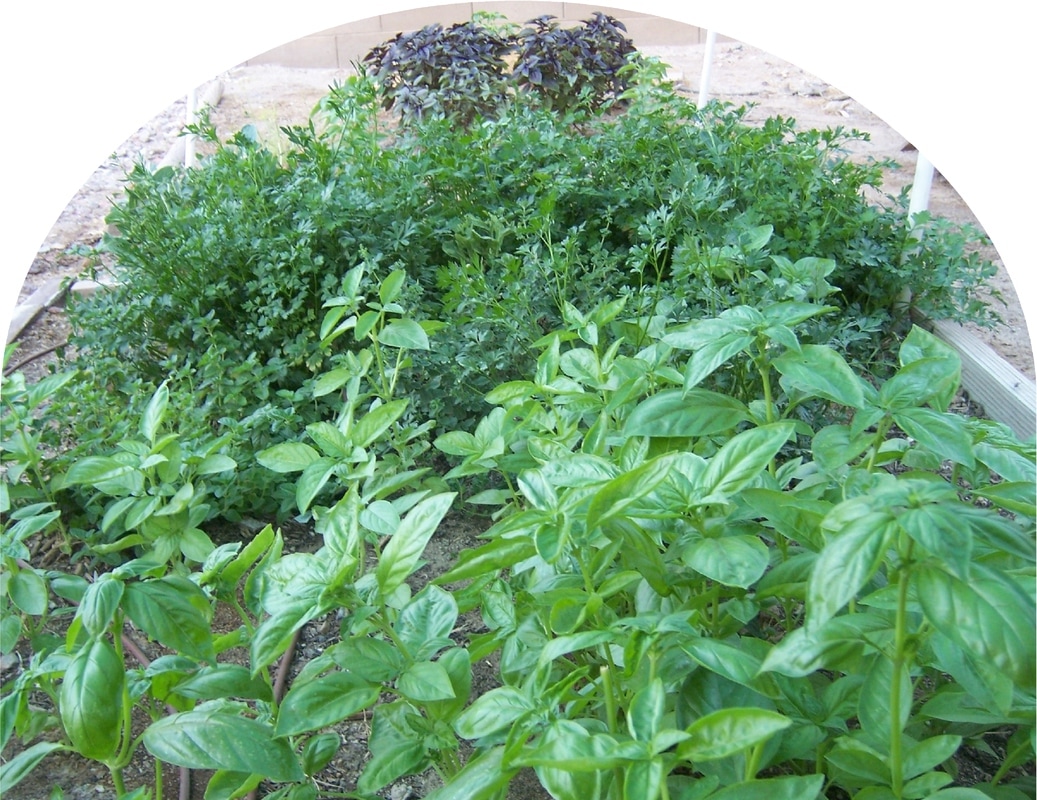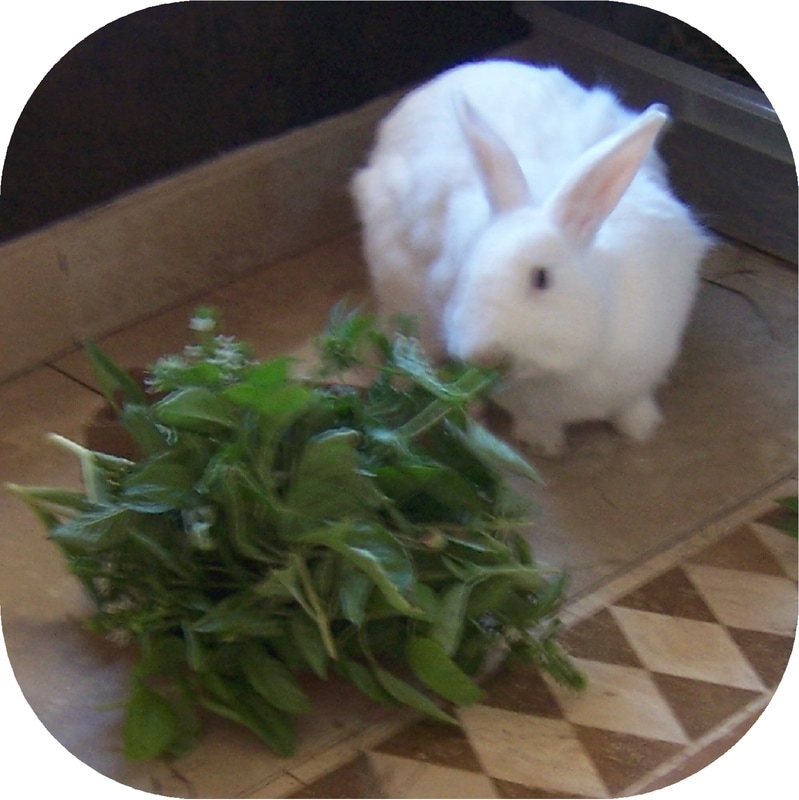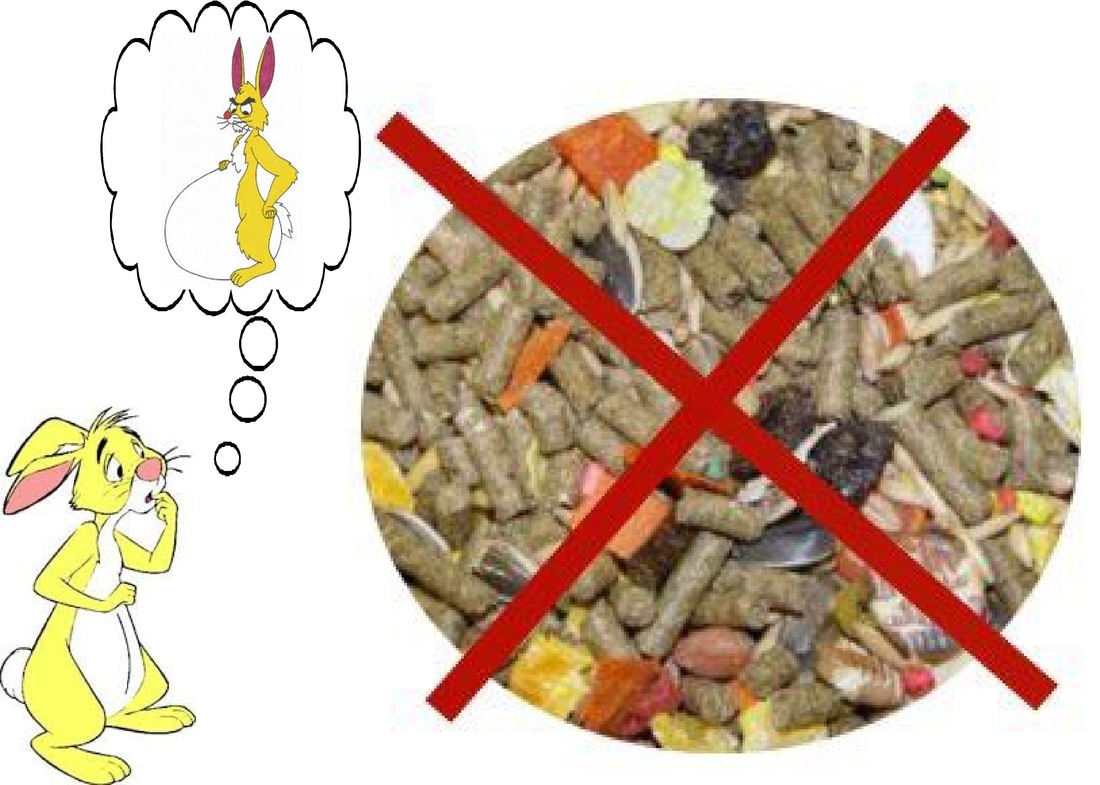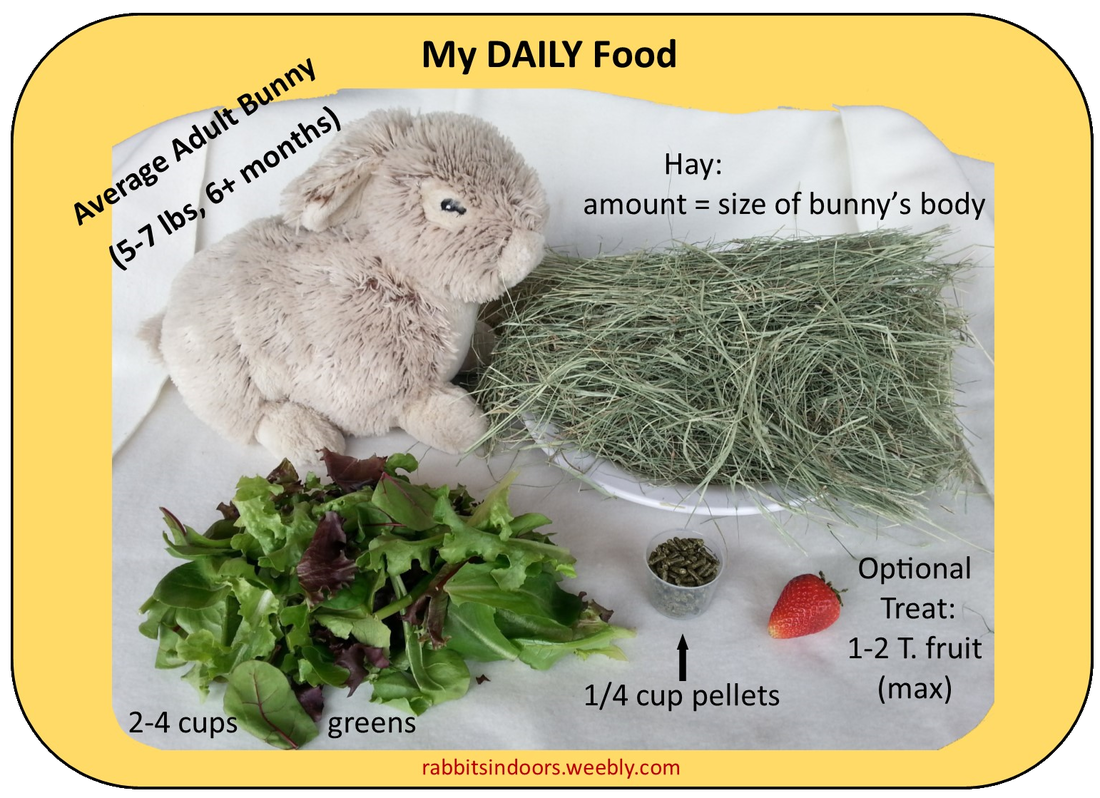[ Tablet users, try the "web" version by clicking on "web" at the bottom of this page for a better, user-friendly format. ]
Costs of Caring for a Rabbit
Some mistakenly believe that a rabbit is an inexpensive pet to keep. Rabbits are too often viewed as a "caged pet" that needs little more than pellet food and bedding. The reality is that keeping a rabbit properly is not cheap. Nevertheless, there are ways to cut costs significantly.
The ASPCA states that the maintenance costs for a rabbit are more than for that of a large breed dog. |
These monthly costs do not include initial set-up costs (cage, first-aid supplies, etc) nor do they include potential vet visits. |
Let's look at monthly supplies and costs, then we'll see how one may cut costs.
|
HAY - $20 per month
Rabbits should eat their body size in hay every day. They like to pick through it, so expect wasted hay. |
GREENS - $35 per month
Once old enough, rabbits need 2-4 cups of greens daily. The types of greens should vary. |
|
PELLET FOOD - $5 per month
Rabbits over 6 months should only get limited amount of pellets. A good brand (no colorful bits) may cost more, but the monthly cost is low since little is fed. |
LITTER - $25 per month
Pet store litter like Carefresh or pelleted paper litter can be used as litter. It isn't necessary (nor advised) to cover the whole cage floor with bedding or litter. |
The above list of monthly supplies totals $85 per month. Clearly, rabbits are not cheap to maintain!
Cutting Costs
It's possible to lower costs down to as little as about $15 per month by following the suggestions below.
|
HAY - Buying bagged hay from the pet store is far more costly than buying it by the bale. If you have the space to store a bale of hay, then look for local feed stores that supply the right type for your rabbit. The amount saved can hardly be exaggerated. A bale of hay can last two rabbits about 8 months. At roughly $15 per bale, the savings are huge!
|
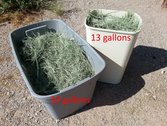
Baled hay is very compressed. The small circle (left photo) shows the small portion of the bale used to fill the 30 gallon tote. The hay in the tote is still fairly compressed and can fill a 13 gallon kitchen trash can about five times. I keep a kitchen trash can filled with hay in the house for convenience. This makes it easy to refresh the hay in my rabbits' cage at least twice each day.
|
Hay bales should be kept covered and dry. If you use a plastic tote, be sure to drill holes for air circulation. If you live in a humid place, be extra careful about air circulation to avoid mold. (I live in a desert, so this is not an issue for me.) TIP: Always leave one strap uncut on the bale. Otherwise the bale will 'explode' into a mass of loose hay.
|
GREENS - Buying fresh greens from the grocery store can be costly and keeping them fresh can be a challenge. However, growing an herb/greens garden can save quite a bit on groceries. Rotate types of plants to suit the various growing seasons and to extend the time greens will be available to harvest from your garden.
|
|
LITTER - Since rabbits litter train so easily, it isn't necessary nor advised to purchase loose, disposable bedding to cover a cage floor. One only needs disposable litter to put in a litter box (and then topped with hay). There are many safe and unsafe litters available at pet stores, but none are cheap. The least expensive (and also most effective) litter is wood pellets. These can be purchased from home improvement stores (sold as wood stove pellets) or from feed stores (horse bedding pellets) in 40 lb bags for $4 - $7 per bag. A single bag can last 2 rabbits for over 2 months.
|
|
PELLET FOOD - This is one area to NOT try to save money. The cheapest pellet foods are junk food and should not be fed to a rabbit. The healthy brands may cost more, but so little is fed daily, that the monthly cost is minimal.
|
